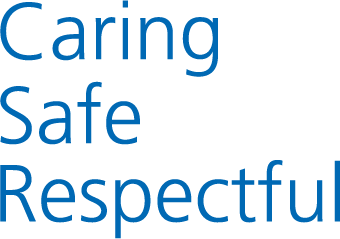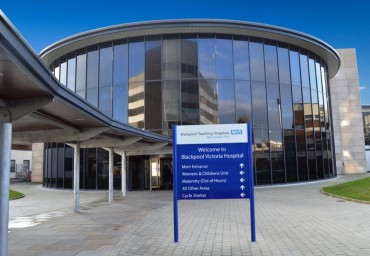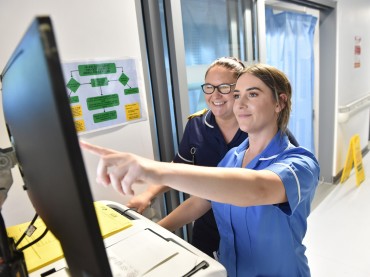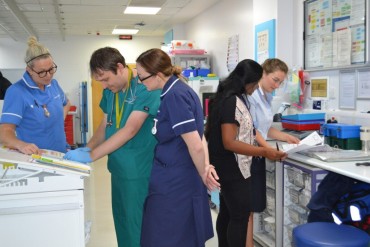Procedure Information
Your child has been discharged with a Balloon retained Gastrostomy Tube (BGT). The BGT has replaced the PEG (Percutaneous Endoscopic Gastrostomy) tube, which was inserted through their belly (abdominal) wall and into their stomach.
The enteral syringes and other ancillaries you currently use will fit your child’s new BGT. The tube can be used, just as you were using the PEG tube, to provide your child with food, fluids, or medicine.
Because the stoma tract is already formed your child should not experience any pain from the procedure and they should be able to feed and have medications as normal when directed by the Day Case Surgery (DSU) staff.
The Balloon retained Gastrostomy Tube
The BGT is a feeding devise that allows your child to be fed directly into the stomach. The main difference between the PEG tube and the BGT is how they are held in place. The PEG tube is held inside the stomach by a plastic or hard foam disc, whilst the BGT is held in place by a balloon filled with small amount of water. This means that future changes of the tube can easily be done at home.
The BGT is placed before your child is measured for a low profile button device.
Changing the device is carried out at home by the Childrens Community Nursing (CCN) team.
The BGT may move in and out slightly. However, it’s important that the BGT doesn’t move around too much as this can cause irritation to the stoma site. See Caring for BGT for more information.
If the tube comes out all of the way please contact the CCN team or Childrens Assessment Unit (CAU) to ask what to do next. Don’t wait until the next day. This is important because the stoma tract through the skin may close very quickly, often in a few hours.
As a precaution against accidentally falling out we advise to check the balloon weekly to ensure it is not leaking. This is an easy procedure and doesn’t cause any discomfort to your child. You will be shown how to do this, at home, by the CCN team.
Following Discharge from DSU
Your Child has had an anaesthetic so may be quieter or more drowsy than usual for 24 hours.
They can continue with their normal feeds and medication on discharge from DSU.
They can resume their normal activities after 24 hours.
After discharge if you think your child is in any pain or any difficulty with feeding/vomiting please call CCN or CAU for advice.
Caring for the G-Tube
Wash your hands thoroughly with soap and clean, running water before and after caring for the BGT
Feed/ administer medications just as you were instructed before with the PEG tube
Clean the area around the tube with mild soap and water twice daily
Pat the area dry after bathing and as needed.
Clean the area more often if it’s leaking some discharge (weeping).
Keep the disk (flange) a few millimetres off the skin (about the depth of a 2 pence coin). Pulling the flange too tightly can damage the skin. But leaving the flange too loose leads to leaking around the BGT. The nursing team will go over these guidelines before you leave the hospital.
Call your CCN team or CAU right away if your child has any of the following:
• The tube comes out
• The tube is blocked
• Vomiting
• Abdominal pain
• Fever of 38.0°C or higher
• Diarrhoea that lasts more than 2 days
• Signs of infection (redness, swelling, or warmth at the tube site)
• Leakage of feed/fluid from the tube site
Further information:
If your preference is for your child to have a low profile button then this can easily be measured and fitted at home within a few weeks of having the BGT placed. The CCN team will teach you how to care for the low profile button and if you like, how to change it yourself.
Please discuss this further with your CCN team
Contact numbers
Childrens Assessment Unit (24hrs) Telephone: 01253953778
Childrens Community Nursing Team (0800-2100hrs)
Leave a message and someone will get back to you at the next available opportunity, please note, this may be the next day
Telephone: 01253 956896
Leaflet Number PL/1550
Author Susan Simpson
Review Date 01/10/2027



